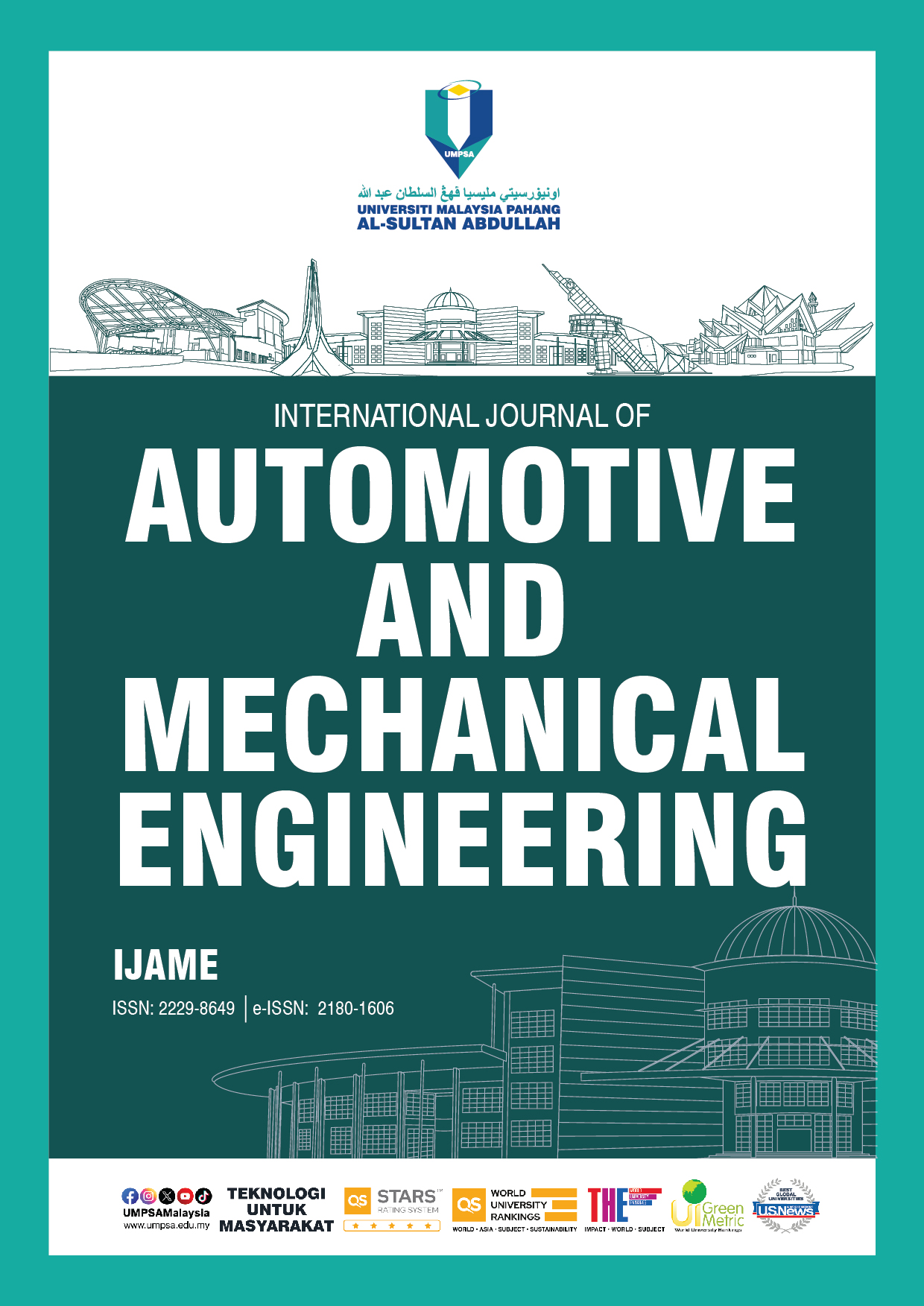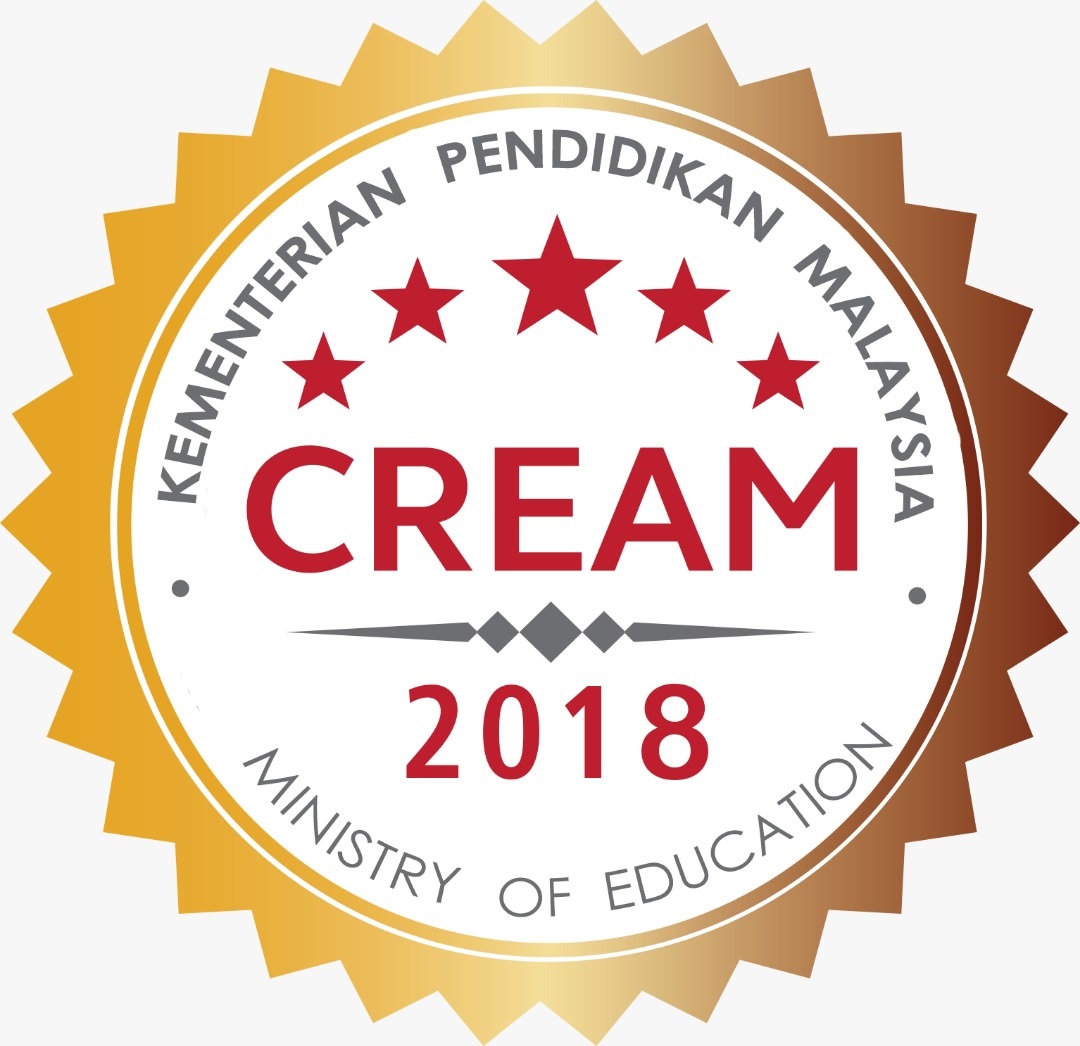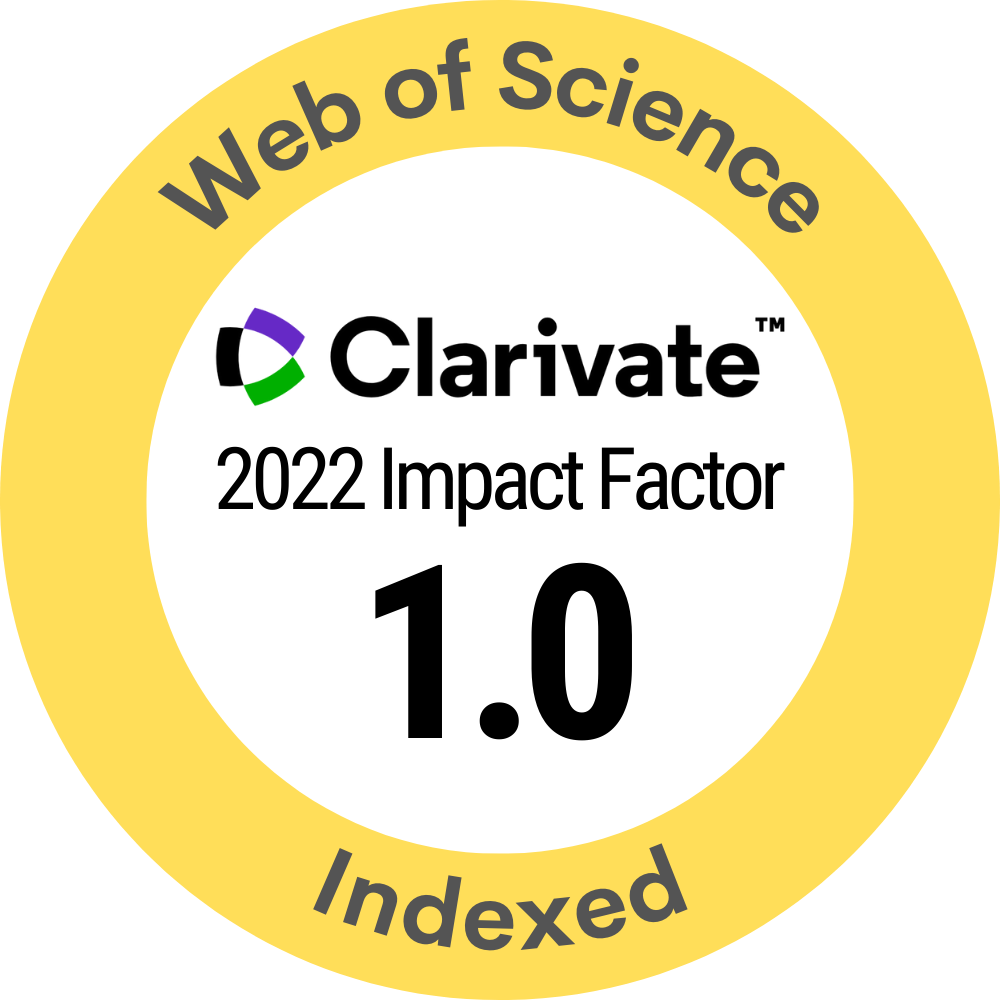Analyzing the Impact of Ergonomics, Biodegradability, and Material Science on Consumer Behavior in Food Packaging
DOI:
https://doi.org/10.15282/ijame.22.2.2025.8.0945Keywords:
Biodegradability, Ergonomic design, Food packaging, Mechanical physical, Physical chemistry, SmartPLSAbstract
Food packaging does the useful work of protecting the product and shaping consumer behavior—being convenient and sustainable. There have been few studies that thoroughly debated the role of ergonomics, biodegradability, and material science in shaping consumer behavior towards buying behavior. The problem has come into the spotlight as consumers increasingly look for not only functional, but sustainable and convenient packaging. Thus, in this research, the effects of ergonomic design, biodegradability, chemical and mechanical physics on organizational purchase intention will be investigated. Partial Least Squares Structural Equation Modeling (PLS-SEM) was used to analyze the data from 121 respondents. Analysis Period Initial Rows The four variables explained 62.8% of the variance in purchase intention (R² = 0.628), the strongest variable was biodegradability (F² = 0.140), followed by ergonomics (F² = 0.115)). The fields of physical mechanics and physical chemistry were significantly relevant to this study, as per its study findings. The study results made certain that all presumptions were accurate, three-polite, excellence of expertise in sustainable, easy-to-use packaging, form consumer choice to purchase. Thus, from these conclusions, we realized that packaging design is not just about being efficient in fulfilling the economic purposes of packaging, it must also address the genuine human needs of consumers — such as practicality and convenience. It indicates that actual innovation in packaging does not emanate from merely trend chasing or where the winds blow, it comes from a good grasp of what the marketplace is actually looking for.
References
[1] R. Çakmakçı, M. A. Salık, and S. Çakmakçı, “Assessment and principles of environmentally sustainable food and agriculture systems,” Agriculture, vol. 13, no. 5, pp. 1–27, 2023.
[2] C. Bou-Mitri, M. Abdessater, H. Zgheib, and Z. Akiki, “Food packaging design and consumer perception of the product quality, safety, healthiness and preference,” Nutrition & Food Science, vol. 51, no. 1, pp. 71–86, 2021.
[3] J. Muncke, B. Geueke, L. Parkonson, and L. Zimmermann, “Food packaging contaminants,” Encyclopedia of Food Safety, vol. 2, pp. 321–333, 2024.
[4] J. W. Han, L. Ruiz-Garcia, J. P. Qian, and X. T. Yang, “Food packaging: A comprehensive review and future trends,” Comprehensive Reviews in Food Science and Food Safety, vol. 17, no. 4, pp. 860–877, 2018.
[5] F. Versino, F. Ortega, Y. Monroy, S. Rivero, O. V. López, and M. A. García, “Sustainable and bio-based food packaging: A review on past and current design innovations,” Foods, vol. 12, no. 5, p. 1057, 2023.
[6] G. Bošnjaković and G. Vladić, “Research methodologies for assessing the ergonomics of packaging products-a review,” In Proceedings of the 10th International Symposium on Graphic Engineering and Design, Novi Sad, Serbia, pp. 12-14, 2020.
[7] M. Forsman, E. Bernmark, B. Nilsson, S. Pousette, and S. E. Mathiassen, “Participative development of packages in the food industry - Evaluation of ergonomics and productivity by objective measurements,” Work, vol. 41, no. S1, pp. 1751–1755, 2012.
[8] S. Otto, M. Strenger, A. Maier-Nöth, and M. Schmid, “Food packaging and sustainability – Consumer perception vs. correlated scientific facts: A review,” Journal of Cleaner Production, vol. 298, p. 126733, 2021.
[9] Z. Hassan, N. Hayati, and H. Mohd, “Ergonomic problems and stress among workers in a manufacturing company,” International Journal of Management Studies, vol. 22, no. 2, pp. 17–31, 2015.
[10] Nelfiyanti and M. Z. N. Mohamed, “Quick response manufacturing and ergonomic consequences in manufacturing environment,” IOP Conference Series: Materials Science and Engineering., vol. 788, no. 1, p. 012031, 2020.
[11] H. Tarwaka, Ergonomi Industri Dasar-Dasar Pengetahuan Ergonomi dan Aplikasi di Tempat Kerja. Surakarta, Indonesia: Harapan Press, 2015.
[12] N. Nelfiyanti, N. Mohamed, M. Rashid, and C. C. Seik, “Ergonomic chair design in minimizing MSD chassis assembly workers complaints using Ergonomic Function Deployment (EFD),” in Technological Advancement in Instrumentation & Human Engineering, Lecture Notes in Electrical Engineering, Springer Nature Singapore, pp. 73-87, 2023.
[13] S. Hensler, D. B. Herren and M. Marks, “New technical design of food packaging makes the opening process easier for patients with hand disorders,” Applied Ergonomics, vol. 50, pp. 1–7, 2015.
[14] G. Bošnjaković, G. Vladić, T. Gvoka, and K. Maričić, “Importance of cognitive ergonomics in packaging design,” 11th International Symposium on Graphic Engineering and Design, pp. 527–532, 2022.
[15] B. Benaissa and M. Kobayashi, “The consumers’ response to product design: A narrative review,” Ergonomics, vol. 66, no. 6, pp. 791–820, 2023.
[16] K. C. Yao, H. H. Hsieh, K. Y. Li, J. R. Xu, W. S. Ho, W. L. Huang, et al., “Sustainable packaging solutions: Food engineering and biodegradable materials,” Designs, vol. 8, no. 6, p. 133, 2024.
[17] A. Panou and I. K. Karabagias, “Biodegradable packaging materials for foods preservation: Sources, advantages, limitations, and future perspectives,” Coatings, vol. 13, no. 7, p. 1176, 2023.
[18] A. Cammarelle, R. Viscecchia, and F. Bimbo, “Intention to purchase milk packaged in biodegradable packaging: Evidence from Italian consumers,” Foods, vol. 10, no. 9, pp. 2068, 2021.
[19] S. Jafarzadeh, A. Salehabadi, A. Mohammadi Nafchi, N. Oladzadabbasabadi, and S. M. Jafari, “Cheese packaging by edible coatings and biodegradable nanocomposites; improvement in shelf life, physicochemical and sensory properties,” Trends in Food Science & Technology, vol. 116, pp. 218–231, 2021.
[20] J. Nilsen-Nygaard, E. N. Fernández, T. Radusin, B. T. Rotabakk, J. Sarfraz, N. Sharmin et al., “Current status of biobased and biodegradable food packaging materials: Impact on food quality and effect of innovative processing technologies,” Comprehensive Reviews in Food Science and Food Safety, vol. 20, no. 2, pp. 1333–1380, 2021.
[21] H. Mohajan, “Quantitative research: A successful investigation in natural and social sciences,” Journal of Economic Development, Environment and People, vol. 9, no. 4, pp. 50–79, 2020.
[22] S. Haryati, “Research and Development (R&D) sebagai salah satu model penelitian dalam bidang pendidikan,” Majalah Ilmiah Dinamika, vol. 37, no. 1, p. 15, 2012.
[23] K. Nallaluthan, S. Kamaruddin, R. Thurasamy, A. M. Ghouri, and K. Kanapathy, “Quantitative data analysis using PLS-SEM (SmartPLS): Issues and challenges in ethical consideration,” International Business Education Journal, vol. 17, no. 2, pp. 41–54, 2024.
[24] P. Paramita, M. Shovitri, and N. D. Kuswytasari, “Biodegradasi limbah organik pasar dengan menggunakan mikroorganisme alami tangki septik,” Jurnal Sains dan Seni ITS, vol. 1, no. 1, pp. 23–26, 2012.
[25] G. B. Pratama, A. Widyanti, N. Nurfitrisari, and S. A. Salma, “Ergonomic product design: An empirical study on the influencing factors to use and to buy,” Strategic Design Research Journal, vol. 15, no. 3, pp. 248–261, 2022.
[26] S. B. Bunally, C. N. Luscombe, and R. J. Young, “Using physicochemical measurements to influence better compound design,” SLAS Discovery, vol. 24, no. 8, pp. 791–801, 2019.
[27] P. Domone and J. Illstone, Construction Materials Their Nature and Behaviour, 4 th Editi. London: CRC Press, 2010.
[28] S. M. Subramanian, “Mechanical properties of materials: Definition, testing and application,” International Journal of Modern Studies in Mechanical Engineering vol. 6, pp. 28–38, 2020.
[29] S. Nuojua, S. Pahl, and R. C. Thompson, “Plastic alternatives and substitutes in the packaging sector – A UK consumer perspective,” Sustainable Production and Consumption, vol. 46, pp. 68–81, 2024.
[30] A. Ivankovic, K. Zeljko, S. Talic, A. Bevanda, and M. Lasic, “Biodegradable packaging in the food industry,” Journal of Food Safety and Food Quality, vol. 8, pp. 23–52, 2017.
[31] Adil, Patang, and A. Sukainah, “Sintesis kulit ubi kayu (manihot esculenta) sebagai bahan dasar pembuatan kemasan biodegradabl,” Jurnal Pendidikan Teknologi Pertanian, vol. 6, no. 1, pp. 55–64, 2020.
[32] N. P. Sari, J. Immanuel, and A. Cahyani, “Aplikasi kansei engineering dan fuzzy analytical hierarchical process dalam pengembangan desain kemasan,” Journal Printing and Packaging Technology, vol. 1, pp. 9–21, 2020.
[33] R. G. Pramono, M. Iqbal, and S. Wulandari, “Design improvement of packaging of kerupuk strawberry kencana mas using quality function deployment method,” eProceedings of Engineering, vol. 2, no. 1, pp. 1–10, 2015.
[34] M. F. B. Harahap, A. Mubarak, and A. Suzianti, “Designing a green food delivery packaging with QFD for Environment (QFDE) and TRIZ,” IOP Conference Series: Earth and Environmental Science, vol. 464, no. 1, p. 012004, 2020.
[35] M. H. Pulungan, L. D. Hastari, and I. A. Dewi, “Perbaikan desain kemasan produk biskuit brownies menggunakan metode Quality Function Deployment (QFD),” Teknotan: Jurnal Industri Teknologi Pertanian, vol. 13, no. 2, p. 39-46, 2019.
[36] Waryat and Y. Handayani, “Implementasi jenis kemasan untuk memperpanjang umur simpan sayuran pakcoy,” Jurnal Ilmiah Respati, vol. 11, no. 1, pp. 33–45, 2020.
[37] R. Rahmadhanimara and T. Purwinarti, “Sensory marketing: Aroma dan cita rasa terhadap pembentukan persepsi konsumen (studi kasus: gerai roti o di Stasiun KRL Commuter Line Jakarta Selatan),” Epigram, vol. 19, no. 2, pp. 162–173, 2022.
[38] E. K. Rastini, S. Astuti, F. Handoko, and P. Vitasari, “Pelatihan Pembuatan Bioplastik untuk Peningkatan Kreativitas Siswa ii Sma Nasional Malang,” Jurnal Aplikasi Sains Teknologi Nasional, vol. 1, no. 1, pp. 7–13, 2020.
[39] M. Ketelsen, M. Janssen, and U. Hamm, “Consumers’ response to environmentally-friendly food packaging - A systematic review,” Journal of Cleaner Production, vol. 254, p. 120123, 2020.
[40] C. Ginting and F. A. Hartati, “Analisis minat beli konsumen berdasarkan kemasan produk makanan dan minuman,” Jurnal Pendidikan Tambusai, vol. 7, no. 3, pp. 28195–28203, 2023.
[41] M. Kakisina and Y. Lego, “Pengaruh citra merek, kualitas makanan, dan kualitas layanan terhadap niat pembelian kembali pada pelanggan KFC Cabang Kakialy di Ambon,” Jurnal Manajerial dan Kewirausahaan, vol. 3, no. 4, p. 1118, 2021.
[42] J. Hair and A. Alamer, “Partial Least Squares Structural Equation Modeling (PLS-SEM) in second language and education research: Guidelines using an applied example,” Research Methods in Applied Linguistics, vol. 1, no. 3, p. 100027, 2022.
[43] J. F. Hair, C. M. Ringle, S. P. Gudergan, A. Fischer, C. Nitzl, and C. Menictas, “Partial least squares structural equation modeling-based discrete choice modeling: an illustration in modeling retailer choice,” Business Research, vol. 12, no. 1, pp. 115–142, 2019.
[44] I. Ghozali, Aplikasi Analisis Multivariat Dengan Program IMB SPSS 23 (Edisi 8). Semarang: Universitas Diponegoro, 2016.
[45] J. Hair, G. T. M. Hult, C. Ringle, and M. Sarstedt, A Primer on Partial Least Squares Structural Equation Modeling (PLS-SEM) using R: A workbook. Springer Nature, 2021.
[46] I. Ghozali and K. Kusuma, Partial Least Squares Konsep, Teknik dan Aplikasi SmartPLS 4.0 untuk Penelitian Empiris, 1st ed. Semarang: Yoga Pratama, 2023.
[47] M. Sarstedt, C. M. Ringle, and J. F. Hair, “Partial Least Squares Structural Equation Modeling,” Handbook of Market Research, pp. 587–632, 2021.
[48] S. Hussain, S. ali, A. Noreen, and S. Fayaz Ahmad, “Impact of product packaging on consumer perception and purchase intention, ” Journal of Marketing and Consumer Research,” vol. 10, no. 1, pp. 1–10, 2015.
[49] C. Daggett and G. L. Klingaman, “Influence of photoperiod and minimum overwintering temperature on growth of nursery liners,” Journal of Environmental Horticulture, vol. 3, no. 1, pp. 25–27, 1985.
[50] M. R. Havstad, “Chapter 5 - Biodegradable plastics,” T. M. B. T.-P. W. and R. Letcher, Ed., Academic Press, 2020, pp. 97–129.
[51] Organisation for Economic Co-operation and Development, “Case study on biscuit wrappers: An example of weighing sustainability criteria for plastic flexible food packaging from a chemicals perspective,” Series on Risk Management No.64 JT03486959 OFDE, no. 64, p. 91, 2021.
[52] H. Wang, M. A. A. Ab Gani, and C. Liu, “Impact of snack food packaging design characteristics on consumer purchase decisions,” SAGE Open, vol. 13, no. 2, p. 21582440231167108, 2023.
[53] V. Guillard, S. Gaucel, C. Fornaciari, H. Angellier-Coussy, P. Buche, and N. Gontard, “The next generation of sustainable food packaging to preserve our environment in a circular economy context,” Frontiers in Nutrition, vol. 5, p. 121, 2018.
[54] F. Wikström et al., “Packaging strategies that save food: a research agenda for 2030,” Journal of Industrial Ecology, vol. 23, no. 3, pp. 532–540, 2019.
Downloads
Published
Issue
Section
License
Copyright (c) 2025 The Author(s)

This work is licensed under a Creative Commons Attribution-NonCommercial 4.0 International License.







